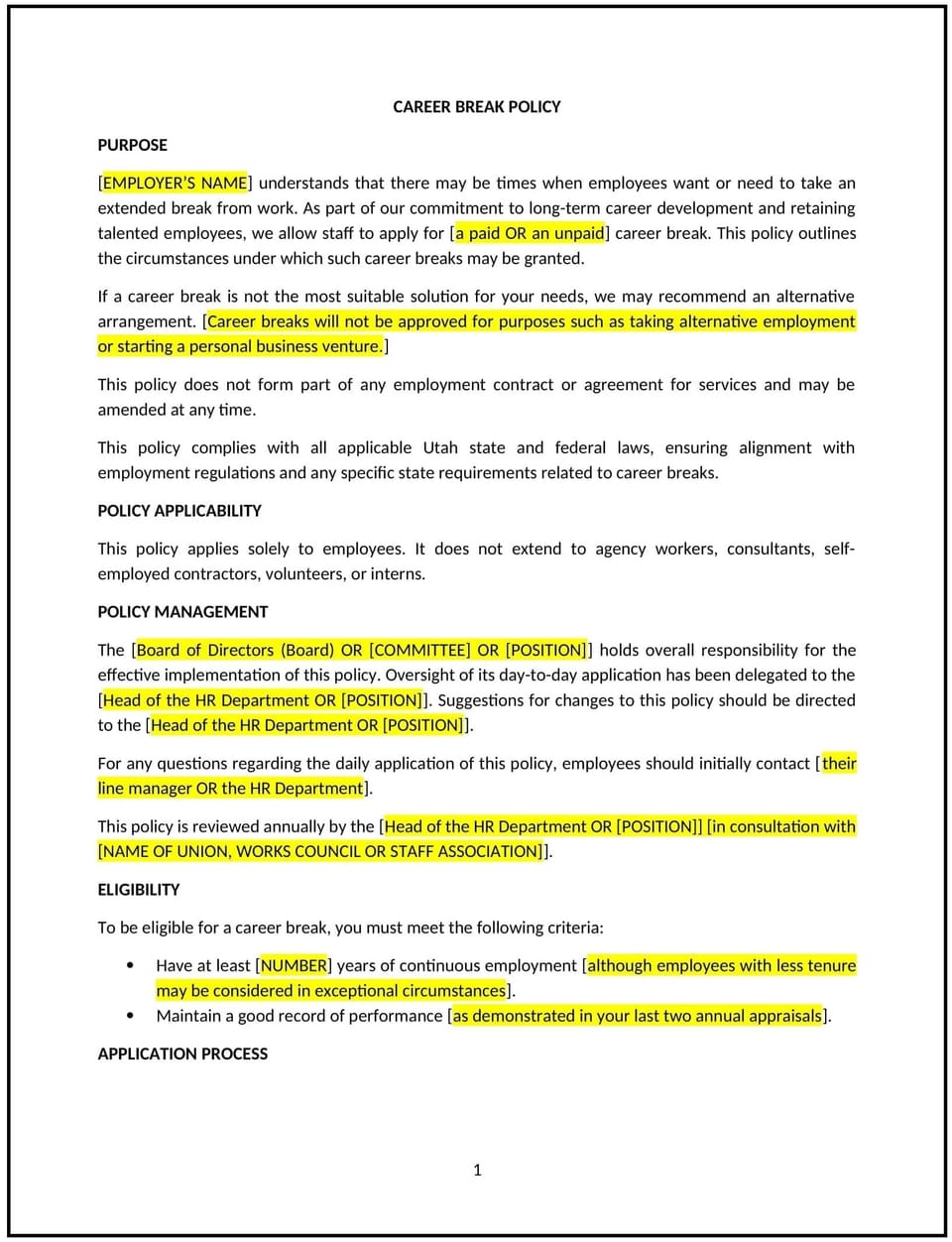Career break policy (Utah): Free template

Career break policy (Utah)
This career break policy is designed to help Utah businesses support employees who wish to take extended time off for personal or professional development. It outlines eligibility criteria, leave duration, and procedures for requesting and managing career breaks.
By adopting this policy, businesses can retain talent, support employee well-being, and align with general best practices for managing extended leave.
How to use this career break policy (Utah)
- Define eligibility: Specify which employees are eligible for career breaks, such as full-time staff with a minimum tenure.
- Outline leave duration: Provide guidelines for the length of career breaks, typically 3-12 months.
- Establish request procedures: Outline the process for requesting and approving career breaks.
- Address benefits: Clarify whether benefits, such as health insurance, will be maintained during the break.
- Plan for return: Define the process for employees to return to work after their break.
- Promote flexibility: Allow for adjustments based on individual circumstances and business needs.
- Review and update: Regularly assess the policy to ensure it aligns with employee needs and business goals.
Benefits of using this career break policy (Utah)
This policy offers several advantages for Utah businesses:
- Retains talent: Helps businesses retain experienced employees by supporting their personal or professional development.
- Enhances morale: Demonstrates a commitment to employee well-being and work-life balance.
- Reduces turnover: Provides an alternative to resignation, reducing recruitment and training costs.
- Aligns with best practices: Offers a competitive benefit that attracts and retains talent.
- Promotes loyalty: Builds trust and loyalty by showing employees they are valued.
Tips for using this career break policy (Utah)
- Communicate the policy: Share the policy during onboarding and include it in the employee handbook.
- Train managers: Educate supervisors on handling career break requests with sensitivity.
- Be flexible: Consider individual circumstances and allow for adjustments as needed.
- Plan for coverage: Ensure work responsibilities are covered during the employee’s absence.
- Review regularly: Assess the policy annually to ensure it aligns with employee needs and business goals.
Q: How does this policy benefit businesses?
A: By supporting employees’ personal or professional development, businesses can retain talent, reduce turnover, and enhance morale.
Q: What types of career breaks are typically covered under this policy?
A: Career breaks may include time off for education, travel, caregiving, or personal projects.
Q: How can businesses manage work coverage during a career break?
A: Businesses can plan ahead by redistributing responsibilities or hiring temporary staff.
Q: Should businesses maintain benefits during a career break?
A: This depends on the business’s resources and policies. Some businesses may maintain benefits, while others may pause them.
Q: How often should businesses review this policy?
A: Businesses should review the policy annually or as needed to ensure it aligns with employee needs and business goals.
This article contains general legal information and does not contain legal advice. Cobrief is not a law firm or a substitute for an attorney or law firm. The law is complex and changes often. For legal advice, please ask a lawyer.


